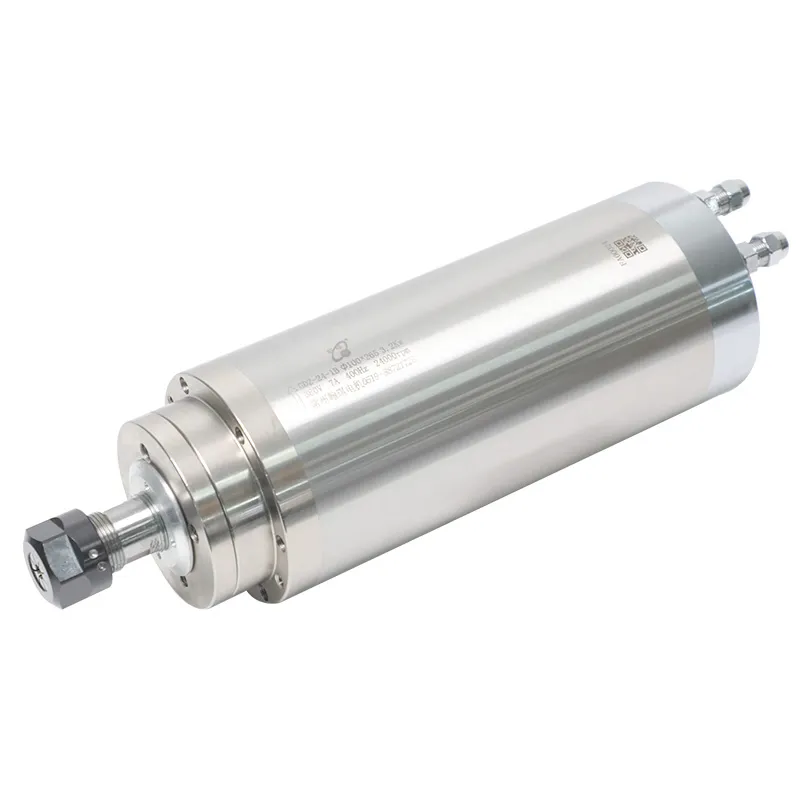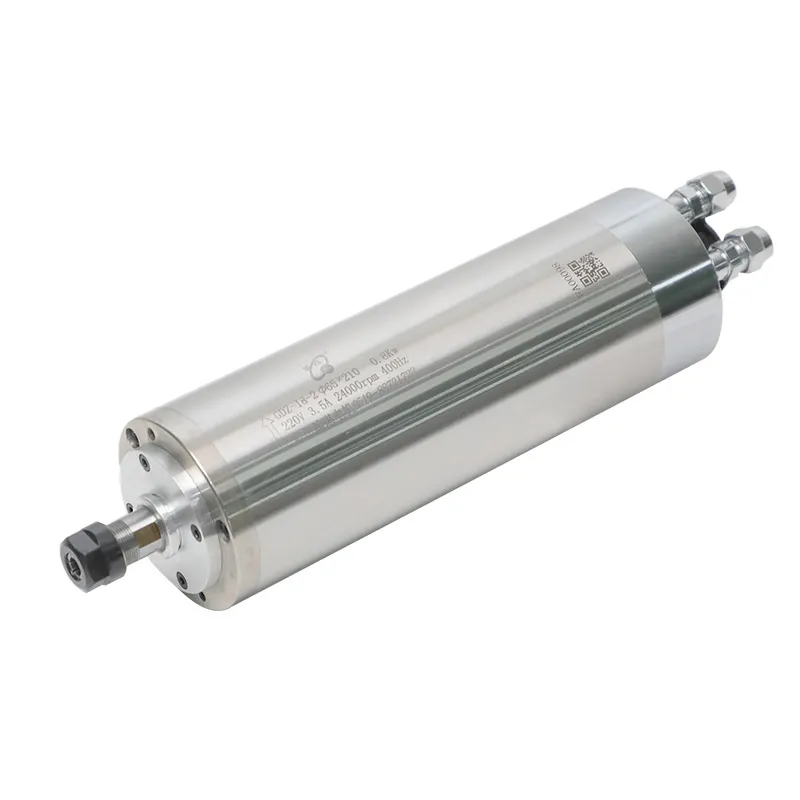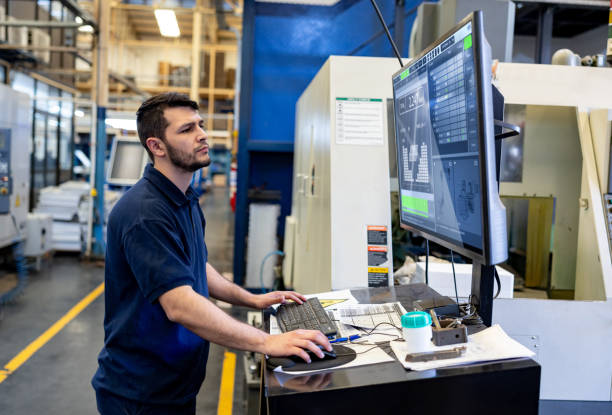CNC cutting is a highly precise process used in the manufacturing industry to cut various materials like metal, wood, plastic, and composites. CNC stands for Computer Numerical Control, which refers to using computers to control machine tools for cutting, milling, drilling, and other manufacturing operations. CNC cutting provides the efficiency, accuracy, and versatility needed to produce parts with tight tolerances that meet exact specifications. This technology is widely utilized in industries ranging from aerospace and automotive to furniture making and medical device production.
In this comprehensive article, we’ll explore CNC cutting in depth. You’ll understand how it works, its various types, the differences between CNC cutting and traditional cutting methods, and why CNC cutting is such a crucial part of modern manufacturing.
Understanding CNC Cutting: How Does It Work?
At its core, CNC cutting involves using a computer to guide a cutting tool along predefined paths to shape or cut a material. The design of the part to be cut is created using Computer-Aided Design (CAD) software. This design is then translated into G-code, which is a programming language that tells the CNC machine how to move and cut.
A CNC machine typically consists of the following components:
- Controller: The controller is the brain of the CNC machine, interpreting G-code and sending signals to the motors that control the cutting tool.
- Spindle: The spindle holds the cutting tool and rotates at high speeds to remove material.
- Cutting Tool: The cutting tool could be a router bit, drill, laser, or other tool depending on the material and cutting method.
- Worktable: The worktable holds the material securely in place while the machine works.
Using CNC technology allows the machine to make very complex, precise cuts automatically, removing the need for manual intervention and thereby minimizing errors.

Image Credit: 24000RPM 3.2KW ER20 Water-Cooled Spindle
Types of CNC Cutting Techniques
There are several types of CNC cutting techniques, each suitable for different materials and applications. Below, we’ll look at the most commonly used CNC cutting methods.
1. CNC Router Cutting
A CNC router is a machine used to cut softer materials like wood, plastic, and foam. CNC routers are often found in carpentry shops, sign making, and DIY setups due to their versatility and ease of use. They are suitable for cutting large sheets and making detailed carvings.
- Materials: Wood, plastics, foams, composites.
- Applications: Furniture making, sign production, cabinetry, architectural models.
2. Laser Cutting
Laser cutting involves using a focused laser beam to cut through materials. It is a highly precise method that is great for creating intricate designs and is often used for metal, acrylic, and wood.
- Materials: Metals, acrylics, wood, leather.
- Applications: Signage, jewelry, sheet metal fabrication.
3. Plasma Cutting
Plasma cutting is a CNC method that uses a jet of hot plasma to cut conductive materials. It is a preferred method for cutting thicker sheets of metal, particularly in industries like automotive and shipbuilding.
- Materials: Steel, aluminum, copper, brass.
- Applications: Metal fabrication, automotive part production.
4. Waterjet Cutting
Waterjet cutting uses a high-pressure stream of water, sometimes mixed with abrasives, to cut through almost any material without generating heat. This makes it ideal for materials sensitive to high temperatures.
- Materials: Metals, glass, stone, ceramics.
- Applications: Stone cutting, glass decoration, aerospace component manufacturing.
Differences Between CNC Cutting and Traditional Cutting
CNC cutting differs significantly from traditional manual cutting methods in terms of precision, efficiency, and repeatability. Let’s explore the major differences.
| Feature | CNC Cutting | Traditional Cutting |
|---|---|---|
| Precision | Extremely high | Depends on operator skill |
| Automation | Fully automated | Requires manual control |
| Repeatability | High | Low |
| Complexity of Design | Can handle intricate designs | Limited by manual capabilities |
| Labor Requirement | Low (minimal manual intervention) | High |
The benefits of CNC cutting over traditional cutting are especially evident in large-scale production where the need for consistency and accuracy is critical.
Materials Commonly Cut by CNC Machines
CNC cutting can be applied to a wide variety of materials. Here, we’ll explore some of the most commonly used materials.
1. Metals
Metal cutting is one of the most prevalent applications of CNC technology. Aluminum, steel, copper, and brass are often cut with CNC machines, using plasma or laser cutting tools for precision.
- Plasma Cutting for Metals: Ideal for thick sheets of steel and other conductive metals.
- Laser Cutting for Metals: Used when precision is a necessity, such as in the aerospace and medical device industries.
2. Woods
CNC routers are widely used for woodworking. They are perfect for cutting, carving, and engraving various wood types, from MDF to hardwoods.
- Furniture Production: CNC cutting is used to make furniture parts with intricate designs.
- Sign Making: CNC routers are popular for creating signs and decorative elements out of wood.
3. Plastics and Composites
CNC cutting can handle different types of plastics, including acrylic and polycarbonate. Laser cutting is often used for plastics to produce clean, polished edges.
- Acrylic Displays: Laser cutting is used to make displays and signs with intricate designs.
- Carbon Fiber: CNC waterjet cutting is used for cutting carbon fiber composites, widely used in the aerospace industry.

Image Credit: 2.2KW ER20 Air-Cooled Spindle
CNC Cutting vs. Laser Cutting: What’s the Difference?
Many people are curious about the differences between CNC cutting and laser cutting. Here’s a breakdown of how these two methods compare.
Precision and Accuracy
- Laser Cutting: Known for its high precision, particularly in cutting metals and acrylics. Laser cutting can produce very fine cuts with clean edges.
- CNC Router Cutting: Offers high precision, but not as fine as laser cutting, especially when working with thicker or tougher materials.
Material Capability
- Laser Cutting: Suitable for thin metals, acrylics, and wood. It struggles with very thick metals or materials that may catch fire easily.
- CNC Cutting: Works well with a wider range of materials, including wood, plastic, and soft metals.
Cost and Efficiency
- Laser Cutting: Often more expensive due to the cost of laser components and higher energy requirements. However, it is very efficient for producing high-quality, detailed work.
- CNC Router Cutting: More affordable for general-purpose cutting and is versatile across many applications.
Applications
- Laser Cutting: Often used for signage, jewelry, and precision parts in aerospace and medical devices.
- CNC Router Cutting: Ideal for furniture making, cabinetry, and general woodworking.
Benefits of CNC Cutting in Manufacturing
CNC cutting offers numerous benefits that make it a preferred option for manufacturers, whether they are small businesses or large-scale operations.
1. Precision and Accuracy
One of the most significant benefits of CNC cutting is its precision. CNC machines are designed to follow the G-code instructions exactly, which eliminates much of the variability found in manual operations. This ensures each cut is consistent with the intended design, which is particularly important in industries where parts must fit together precisely.
2. Automation and Reduced Labor Costs
CNC machines are fully automated, reducing the need for manual labor. This not only decreases labor costs but also reduces the chance of errors, as human intervention is minimized. For businesses looking to scale, CNC technology offers a cost-effective solution that can handle increased workloads without hiring additional staff.
3. Versatility Across Materials
The versatility of CNC cutting is another standout benefit. CNC machines can work with materials ranging from aluminum and steel to wood, acrylic, and foam. This makes CNC an excellent choice for businesses that need to produce a wide variety of products using different materials.
4. Efficient Production
CNC cutting allows for efficient production runs, enabling manufacturers to produce large quantities of parts without compromising on quality. The consistency provided by CNC machines ensures that every part is identical, making them ideal for applications where tight tolerances are required.
CNC Cutting Software: CAD and CAM
1. CAD (Computer-Aided Design)
CAD software is used to design the part that needs to be cut. Programs like AutoCAD and Fusion 360 allow engineers to create detailed 2D or 3D models of the desired product. These models include all dimensions and specifications necessary for production.
2. CAM (Computer-Aided Manufacturing)
CAM software takes the CAD model and converts it into G-code, which is the programming language that tells the CNC machine how to make the part. CAM software, such as Mastercam or VCarve, is responsible for determining the tool paths, cutting speed, and feed rate, ensuring the machine operates optimally.
Common CNC Cutting Tools
The tools used in CNC cutting can vary depending on the material and the type of cut desired. Here are some common CNC cutting tools:
- End Mills: These are used for most milling applications and come in different diameters and shapes for a wide range of cutting tasks.
- Drill Bits: Used for drilling holes in the material, available in various sizes.
- Laser Heads: Used in laser cutting machines to cut or engrave the material.
- Plasma Torches: These are used in CNC plasma cutting machines to cut through thick sheets of metal.
Each tool is chosen based on the material being cut, the required precision, and the nature of the finished product.

Image Credit: 24000RPM 0.8KW ER11 Water-Cooled Spindle
FAQs
1. What materials can CNC machines cut?
CNC machines can cut a wide variety of materials, including metals (like aluminum and steel), wood, plastics, and composites.
2. Is CNC cutting better than laser cutting?
It depends on the application. Laser cutting is more precise and suitable for intricate designs, while CNC cutting is more versatile and works well with a wider range of materials.
3. What industries use CNC cutting?
Industries such as automotive, aerospace, medical devices, furniture, and signage production commonly use CNC cutting.
4. How can CNC cutting improve production efficiency?
CNC cutting improves efficiency by automating the cutting process, reducing labor costs, and ensuring consistent quality across large production runs.
5. Are there different types of CNC cutting techniques?
Yes, different types include router cutting, laser cutting, plasma cutting, and waterjet cutting. Each type has its own advantages and is suitable for specific materials.
Conclusion
CNC cutting plays an essential role in modern manufacturing, providing the precision, versatility, and efficiency required for producing high-quality parts. Whether you’re cutting metals, wood, or plastics, CNC technology offers the flexibility needed for various applications, from aerospace components to custom furniture. By leveraging CAD and CAM software, CNC machines can turn digital designs into tangible products with a high degree of accuracy. If you’re looking to expand your capabilities in CNC machining, consider investing in a high-quality spindle from spindlemotorshop.com, where you’ll find a wide selection of reliable products to suit your CNC needs.

